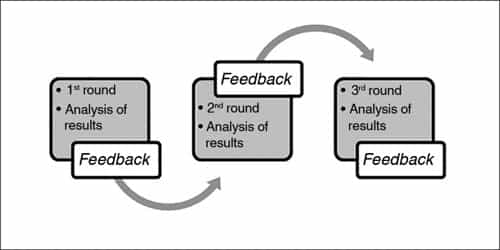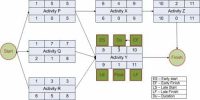The Delphi method is popular in many disciplines. It is a forecasting method based on the results of questionnaires sent to a group of experts. Several rounds of questionnaires are sent out, and the anonymous responses are aggregated and shared with the group after each round. It uses a group of participants (known as ‘panelists’) specially selected for their particular expertise on a topic. The experts are allowed to adjust their answers in subsequent rounds. Because multiple rounds of questions are asked and because each member of the panel is told what the group thinks as a whole, the Delphi Method seeks to reach the “correct” response through consensus. It is believed that during this process the range of the answers will decrease and the group will converge towards the “correct” answer.
The Delphi technique was recommended as the method of choice when:
- subjective statements made on a collective basis are desired;
- face-to-face interaction is difficult due to large sample sizes;
- anonymity is preferred, such as when issues are intractable or political; and
- there is a chance of domination of a group discuss by one person.
The Delphi Method seeks to aggregate opinions from a diverse set of experts and can be done without having to bring everyone together for a physical meeting. Because the responses of the participants are anonymous, individual panelists don’t have to worry about repercussions for their opinions. Consensus can be reached over time as opinions are swayed.
















